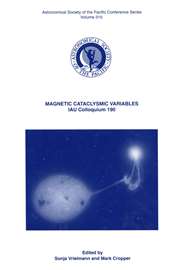Article contents
Horizontal Branch Evolution
Published online by Cambridge University Press: 12 April 2016
Abstract
In 1973 the outstanding problems confronting the theory of horizontal branch evolution were the “second parameter” problem and the Oosterhoff Effect. Despite significant progress, particularly in the observations and in the observation/theory interface, they remain as the outstanding problems of 1988. The Oosterhoff Effect is now discussed primarily in the guise of the Sandage Period Shift Effect. The morphology of the HB seems more complicated than ever. E.g., many clusters show bimodal distributions along the HB. Here we will tentatively consider those to be manifestations of the second parameter problem. We will indicate why we feel that all previously suggested solutions have all been chimeras.
Information
- Type
- 2. Morphology and History of the Galaxy
- Information
- Copyright
- Copyright © Cambridge University Press 1989
References
- 3
- Cited by

